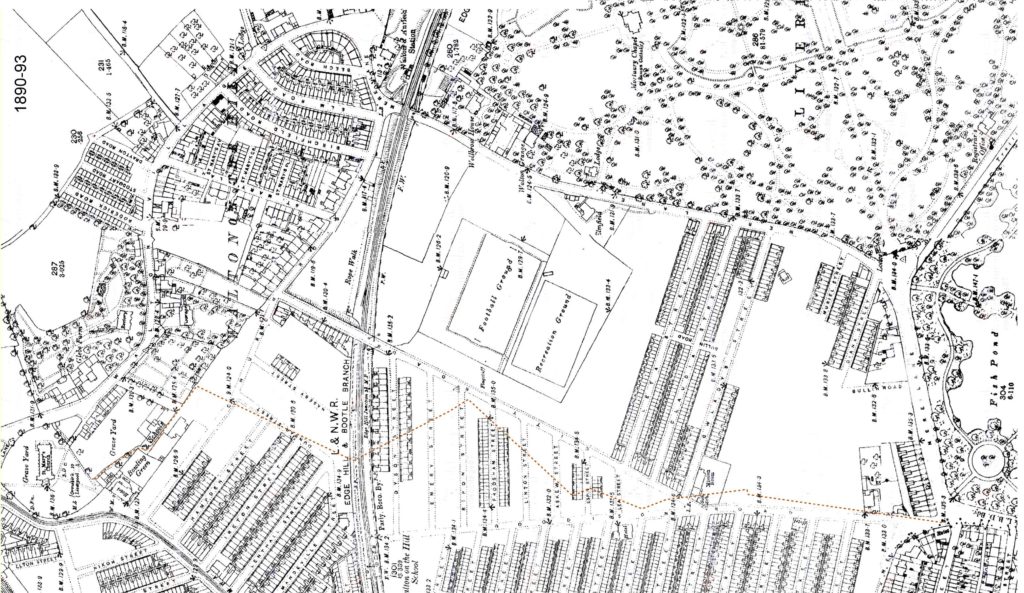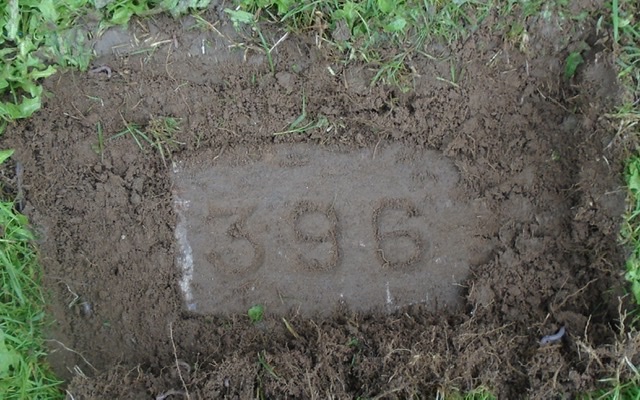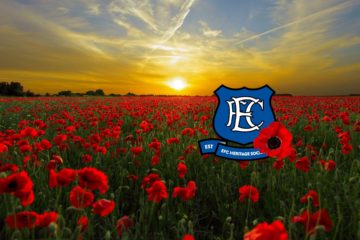The Final Journey of an Everton Blue
Signed during the pre-Football League era, Robert Stevenson returned eventually to live in his native Scotland but spent the last days of his life in Liverpool. He was born January 1861, at 34 Ardeer Square in the Ayrshire coastal town of Stevenson and was the seventh child of George, a coal miner, and his wife Margaret. The 1881 census found the family living in Kilmarnock at 52 Low Glencairn Street. Robert was employed as a grocery assistant. It is around this time that he began serving an apprenticeship as an engine fitter and to play football for Kilmarnock Athletic.
One of several teams in the Ayrshire railway town, they had been formed originally as Kilmarnock Cricket and Football Club but obtained their own identity in 1879. They did, however, continue to play their home matches on the cricket ground at Holm Quarry. John Goodall – the future England International – was then living off Glencairn Street and he began his football career with Kilmarnock Athletic.
They quickly developed into the best team in the county and won the Ayrshire Cup on three occasions between 1880 and 1884, before Goodall, along with three other players, left the club to play their football in Lancashire. Kilmarnock Athletic then went into decline so Rob Stevenson, along with Sandy Dick and Hugh Pollock, decided to move south and sign for Stanley.
The Liverpool-based club, formed in 1882, had recently been playing their games on Stanley Park but had taken possession of a football enclosure left vacant by the defunct Liverpool Association Football Club. It stood in the north end of the city and took its name from a footpath known locally as Walton Stiles. There were no dressing rooms on the ground so the team would change and entertain their visitors at the Spellow Arms Tavern on Walton Lane.

Stevenson was in the Stanley side when Everton made their first visit to Walton Stiles – 10 October 1885 – where 2000 people watched the home side lose 2-0. During the festive season, he returned to Kilmarnock and, 29 December, married Jane Robertson at 15 Waterside Street. The marriage certificate stated that the groom was residing at Melbourne Street in Liverpool and that his occupation was an engine fitter. Jane remained in Kilmarnock, but her husband returned to his lodging in Liverpool and continued to play football for Stanley.
On 27 March 1886, Rob Stevenson was in the Stanley side when they lined up to face Everton in the semi-final of the Liverpool Cup. The game took place on the Bootle ground at Hawthorne Road, where 4,000 people watched his side lose 3-0. When the season ended, he returned to Kilmarnock.
In September 1886 Rob Stevenson, along with Sandy Dick, accepted an offer to join Everton and made his debut 9 October. He scored in a 4-1 win over Bury at Anfield. The Scot remained with the club throughout the season and played in several attractive fixtures. He took part in the game when the famous Corinthians visited Anfield during their Christmas tour and was in the Everton party when they made their first ferry crossing to Belfast where they played Ulster FC. The Ayrshire man was in the Everton side that opposed Aston Villa when they made their first visit to Liverpool. The Midland side had just lifted the FA Cup and their appearance produced a record crowd at Anfield who watched the sides draw 2-2.
The fine performances by Stevenson were rewarded when he was selected to represent the Liverpool & District FA against their counterparts from Cheshire 23 April 1887. The match took place at Walton Stiles and the Liverpool side were defeated by four goals to two.
Records show that Jane Stevenson had a son 1 May 1886 while still living at 15 Waterside Street in Kilmarnock. The birth certificate stated that Robert was still living at 12 Melbourne Street and continued to work as an iron turner. On 7 July 1888, the couple were blessed with a second son while Jane was still living in Kilmarnock. Her husband, however, was now a police officer and was lodging in Copperfield Street in the south end of Liverpool. It is around this time that Robert Stevenson began playing amateur football for the Liverpool Police Athletic.
The side had been formed under the watchful eye of Inspector Churchill who enrolled them as members of the Liverpool & District FA. The constabulary members had recently constructed a sports and social club on Shiel Road and it was here that the football team played their home matches. Rob Stevenson became a regular member of the Police Athletic side who granted him permission to appear for Everton on two further occasions.
The Anfield club – now members of the Football League – had arranged two home fixtures for Christmas Day and invited Stevenson to play alongside his old friend Hugh Pollock against the Irish touring side, Ulster FC. The game kicked off at 10.30 am and Everton won 3-0. On 26 January 1889, the Scot made his one and only appearance in the Football League – against Wolverhampton Wanderers – on the Molineux Grounds, featured below.

The Everton side were lying in the lower half of the table and, with four matches left to play, had won away just once. They had struggled all season to find an established team and to date had used over thirty different players. Stevenson replaced John Weir in the Everton half-back line where he took up position alongside John Holt and George Farmer. The home side proved too strong for the visitors and beat them 5-0. The Scot had returned to the Police Athletic side when they played a fixture against an Everton XI which contained Hugh Pollock, 26 April at Anfield. They lost the game 4-2. Robert Stevenson spent the rest of his football career with the Police Athletic, before retiring from the game.
The1891 census found the Stevenson family now residing at 20 Ruskin Street in the Walton area of Liverpool where the ‘head of the household’ now held the rank of detective. They had a third child, Jane, who had also been born in Kilmarnock. On 8 January 1897 a second daughter, Margaret, was born in Liverpool, but Jane was back in Kilmarnock when she gave birth to a third son on 3 May 1900.
The 1901 census found Robert Stevenson, who had now attained the rank of detective inspector, boarding at Roxburgh Street in Liverpool while his family resided at West Netherton Street in Kilmarnock. He later transferred to the Kilmarnock Burgh Police, where he filled the position of inspector. The 1911 census revealed that the family now lived at 24 Glebe Street in Kilmarnock but their eldest daughter Jane was no longer alive.
Years later, with two sons now living in North America, Robert and Jane Stevenson moved with their son Robert, to live at 13 James Little Street in Kilmarnock where Jane died 10 June 1939. Records then revealed that Robert Stevenson was officially residing at 23 Linfern Avenue, Kilmarnock when he made a return visit to Liverpool.
The reasons why this elderly Scotsman made a hazardous wartime journey have yet to be discovered. At the time the Mersey seaport was under attack by the German Luftwaffe. During the festive season 1940 Liverpool was repeatedly bombed and 365 of its citizens had lost their lives. Around this time Robert Stephenson was admitted to Sefton General Hospital where he died on 28 January 1941 of myocardial degeneration. He was buried in a private grave at Allerton Cemetery. He was 79 years old.


© Tony Onslow 2020



